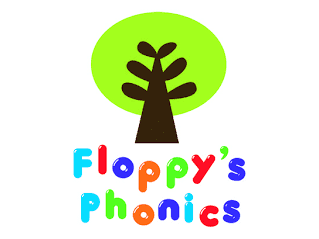Most parents and educators are always on the lookout for effective strategies to help children become proficient readers. Phonics instruction has been proven time and time again to be a powerful tool in teaching children how to read with accuracy and fluency. By breaking down words into their individual sounds and teaching the relationships between letters and sounds, phonics provides a solid foundation for reading success. In this blog post, we will explore the importance of phonics instruction and how it can pave the way for children to become confident and skilled readers.
Key Takeaways:
- Phonics is a crucial foundation for reading success: Phonics helps children understand the relationship between letters and sounds, enabling them to decode words and read accurately.
- Phonics instruction is systematic and sequential: Phonics programs teach letter-sound correspondences in a specific order, gradually building on previously learned skills.
- Phonics enhances literacy skills: By developing phonemic awareness and decoding abilities, phonics instruction improves a child’s reading fluency, comprehension, and overall literacy skills.
- Phonics benefits all learners: Phonics instruction is beneficial for all students, including struggling readers, English language learners, and students with learning disabilities.
- Phonics should be integrated into reading instruction: Incorporating phonics activities into a balanced literacy approach provides a well-rounded reading curriculum that addresses both decoding and comprehension skills.
The Basics of Phonics
Clearly, understanding the fundamentals of phonics is crucial in helping children develop strong reading skills. Phonics is the method of teaching reading and writing by correlating sounds with letters or groups of letters in an alphabetic writing system.
The Alphabet and Sounds
Any successful journey in phonics begins with grasping the relationship between the alphabet and the sounds they represent. Each letter in the alphabet corresponds to one or more sounds, known as phonemes. By learning the sounds of each letter, children can start blending these sounds together to form words.
With a solid foundation in the alphabet and sounds, children can move on to understanding phonemes and graphemes.
Phonemes and Graphemes
Any effective phonics program will introduce the concept of phonemes and graphemes. Phonemes are the smallest units of sound in a language, while graphemes are the written symbols that represent these sounds. Understanding the relationship between phonemes and graphemes is essential for mastering the decoding and encoding skills necessary for reading and spelling success.
To examine deeper into phonemes and graphemes, it’s important to recognize that the English language is comprised of 44 phonemes, represented by various combinations of letters and letter patterns. By understanding this relationship and practicing phonics exercises, children can enhance their ability to decode words and improve their overall literacy skills.
Phonics Instruction Strategies
Any successful reading program incorporates various phonics instruction strategies to help students grasp the foundational skills needed for reading. Phonics instruction is essential in teaching students how to decode words, recognize letter-sound relationships, and ultimately become fluent readers.
Synthetic Phonics
An effective phonics instruction strategy is Synthetic Phonics, which involves teaching students the sounds of individual letters and letter combinations, and then blending those sounds together to form words. This approach helps students build a strong foundation in phonemic awareness and decoding skills, laying the groundwork for reading success.
Another approach to phonics instruction is Analytic Phonics, which focuses on analyzing whole words to identify the phonetic elements within them. This method helps students recognize common phonetic patterns and apply them to new words, enhancing their ability to decode unfamiliar words while reading.
Analytic Phonics
One advantage of Analytic Phonics is that it allows students to learn phonics in the context of real words and sentences, making the learning process more meaningful and practical. By analyzing whole words, students can apply their phonics knowledge directly to reading, improving their reading fluency and comprehension.
Plus, Analytic Phonics helps students develop their vocabulary and spelling skills, as they learn to recognize patterns and relationships between words. This approach is especially beneficial for older students or struggling readers who may benefit from a more holistic approach to phonics instruction.
Overcoming Challenges
To truly unlock the power of phonics and achieve reading success, one must be prepared to face and overcome various challenges along the way. These challenges can range from mastering difficult phonics rules to maintaining consistency in practice. Overcoming these obstacles is crucial for the development of strong reading skills.
Common Phonics Difficulties
With phonics being a foundational element of reading, it is common for learners to face challenges in grasping certain phonics concepts. Some of the common difficulties include confusing similar sounding letters, blending sounds together, and understanding silent letters and digraphs. These stumbling blocks can hinder progress and make the reading journey more challenging.
With dedication and targeted practice, these difficulties can be overcome. By focusing on specific exercises and techniques, learners can improve their phonics skills and develop a deeper understanding of how letters and sounds work together to form words.
Tips for Effective Practice
With regular practice, one can strengthen phonics skills and enhance reading abilities. Incorporating activities such as word games, reading aloud, and word drills can make practice sessions more engaging and effective. Additionally, using phonics workbooks and online resources can provide structured guidance for focused practice.
- Set aside dedicated time each day for phonics practice.
- Engage in activities that target specific phonics rules or patterns.
- Practice reading a variety of texts to expose oneself to different phonics patterns and words.
For instance, utilizing flashcards with phonics rules or engaging in phonics-based puzzles can help reinforce learning and improve retention of phonics concepts. By incorporating these tips into regular practice routines, individuals can enhance their phonics skills and boost their reading fluency.
- Set aside dedicated time each day for phonics practice.
- Engage in activities that target specific phonics rules or patterns.
- Practice reading a variety of texts to expose oneself to different phonics patterns and words.
Phonics Beyond the Classroom
Despite the importance of phonics instruction in the classroom, its impact can extend far beyond school walls. By incorporating phonics into daily life and exploring advanced concepts, individuals can enhance their reading skills and unlock a world of possibilities.
Incorporating Phonics in Daily Life
Life is filled with opportunities to reinforce phonics skills outside of traditional learning environments. Encouraging children to practice phonics in everyday activities can solidify their understanding of letter-sound relationships and improve their reading fluency. Here are some simple ways to incorporate phonics in daily life:
- Read Aloud: Engage in reading aloud activities where children can sound out words and identify phonetic patterns.
- Word Games: Play word games such as Scrabble or Bananagrams that require the use of phonics skills.
- Label Objects: Label household items with their corresponding names, encouraging children to sound out the words.
Advanced Phonics for Lifelong Reading
Lifelong reading success is achievable through the exploration of advanced phonics concepts. By delving deeper into phonics rules and practicing complex phonetic patterns, individuals can become more proficient readers. Here are some advanced phonics skills to consider:
- Prefixes and Suffixes: Understanding how prefixes and suffixes impact word meaning and pronunciation.
- Syllable Division: Learning rules for dividing multisyllabic words into syllables for accurate pronunciation.
For instance, by mastering advanced phonics skills, readers can decode unfamiliar words more effectively, expand their vocabulary, and ultimately improve their comprehension of written texts.
| Skill | Benefit |
| Prefixes and Suffixes | Enhanced word recognition and vocabulary expansion |
| Syllable Division | Improved pronunciation and decoding accuracy |
FAQ
Q: What is phonics?
A: Phonics is a method of teaching reading and writing by correlating sounds with letters or groups of letters in an alphabetic writing system.
Q: Why is phonics important in learning to read?
A: Phonics helps children recognize the relationship between sounds and letters, which is essential for decoding words and becoming fluent readers.
Q: How does phonics improve reading skills?
A: Phonics instruction helps children develop phonemic awareness, decode unfamiliar words, and build a strong foundation for reading and spelling.
Q: What are some effective phonics strategies for teaching reading?
A: Some effective phonics strategies include teaching letter-sound relationships, blending sounds together to read words, and practicing with decodable texts.
Q: How can parents support phonics learning at home?
A: Parents can support phonics learning at home by reading with their children, playing word games, and providing opportunities for practice with letter-sound relationships.











